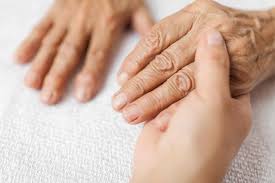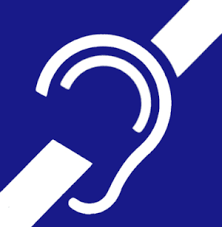 The Early Stage Of Dementia. In the early stages, families will worry. A family member may say or forget things that make them wonder if it’s dementia or just a normal part of aging. They should consider persuading their loved one to get an evaluation from a professional. If their loved one is hesitant, a self-assessment could be used to encourage a visit to a professional. A doctor can help determine the type and stage of dementia and whether it is likely to be Alzheimer’s disease or some other type. If it is Alzheimer’s disease (60-80% of those with dementia), there is typically a slow progression over time. The chances are good that their family member can remain at home through early stages, even continuing to live alone Even after a diagnosis, they'll continue to wonder whether it really is dementia and look for another test they can do at home. But maybe they'll also be concerned with the day-to-day activities of daily living (ADLs), especially if their loved one is living alone. Perhaps there is an unrelated health issue, and they're concerned about whether he/she is taking medications correctly or making it to medical appointments. Issues such as these can be addressed with calendar or reminder technologies.
The Early Stage Of Dementia. In the early stages, families will worry. A family member may say or forget things that make them wonder if it’s dementia or just a normal part of aging. They should consider persuading their loved one to get an evaluation from a professional. If their loved one is hesitant, a self-assessment could be used to encourage a visit to a professional. A doctor can help determine the type and stage of dementia and whether it is likely to be Alzheimer’s disease or some other type. If it is Alzheimer’s disease (60-80% of those with dementia), there is typically a slow progression over time. The chances are good that their family member can remain at home through early stages, even continuing to live alone Even after a diagnosis, they'll continue to wonder whether it really is dementia and look for another test they can do at home. But maybe they'll also be concerned with the day-to-day activities of daily living (ADLs), especially if their loved one is living alone. Perhaps there is an unrelated health issue, and they're concerned about whether he/she is taking medications correctly or making it to medical appointments. Issues such as these can be addressed with calendar or reminder technologies.
Tech for the early stage. If their loved one lives with them, they may want to acquire motion sensors or a smart doorbell to know when their loved one is out of bed or near the door. If their family member is still driving, a smart phone app for turn-by-turn directions as well as a “wearable” to help their loved one find his/her way. Finally, families may want to focus on maintaining their loved one's quality of life at home, introducing smart speakers to play music at scheduled times, or even storytelling technology to help their loved one talk about themselves and their lives, which can be a comfort.
|
Needs of the Early stage |
Tech Categories |
Examples |
|
Activities of daily living |
Motion sensors |
|
|
At home |
Smart Speakers |
Amazon Echo, Dot |
|
Wandering/driving |
GPS Tracking |
Philips GoSafe, MobileHelp |
The Middle Stage Of Dementia (All Above Plus The Following):
When dementia progresses to the point where a family member is concerned about their loved one getting lost, it may be time for them to discuss whether or not their loved one should be driving and encourage walking, if it’s an option. Their loved one’s loss of independence is difficult to confront, but for safety, it's critical.At that point, a wearable with location tracking may help keep their loved one safe and reduce worry about getting lost near their home. Home safety needs to be addressed as well. Tools such as an automatic stove shutoff and a home alarm system with water detection for faucets that may be left running can help reduce risks. From a health standpoint, it may make sense to have a medication reminder/dispensing system that both alerts about a dosage and only alerts/releases the appropriate medication at the right time.
|
Needs of the Middle stage |
Tech Categories |
Examples |
|
Care coordination |
Private health websites, managing medications |
|
|
Wander management |
Location tracking tools |
|
|
Mental stimulation |
Music Therapy, Personalized content for Dementia |
|
|
Medication management |
Pre-loaded dosages released at specific times |
|
|
Home safety |
When loved one is alone in their home |
The Advanced Stage Of Dementia:
In the more advanced stages of dementia, a loved one might need an in-home care worker while you are out or at work. Or a family member may need to hire a round-the-clock caregiver to help their loved one with meals, showers, dressing and other routines. Installing a remote camera may help provide peace of mind. Families can also consider other tools that help comfort and relax their loved one. An adult day center that can provide a full day of activities and interactions for those with dementia is also a resource.
|
Needs of the Advanced stage |
Tech Categories |
Examples |
|
In-home care services |
Home care workers for partial day or full day |
|
|
Remote monitoring |
Cameras, sensors |
|
|
Engaging seniors |
Robotic cats, dogs |
|
|
Bed/chair exit tools |
Alerts when a person gets up |
|
|
Adult day centers |
Centers trained in dementia care |
|
|
Memory care |
Specialized units for those with dementia |
from Tips For Aging In Place https://www.ageinplacetech.com/blog/technology-help-care-individuals-dementia
 Today or soon you will launch a boomer/senior, home health tech product or service, or maybe a caregiver advisory service. As your company gets ready to travel into battle or a booth with the sound of
Today or soon you will launch a boomer/senior, home health tech product or service, or maybe a caregiver advisory service. As your company gets ready to travel into battle or a booth with the sound of In 2020, focus sharpens on technology market categories of aging and caregiving. AARP
In 2020, focus sharpens on technology market categories of aging and caregiving. AARP  The hearing loss statistics are daunting. The number is sizable –
The hearing loss statistics are daunting. The number is sizable –